sonoma county
-
Seasons in The Cellar: Scale House
August 18, 2022 10:43
Montse walks us through the scale house as we prepare for harvest.
Follow us on social media to stay up to date with our harvest season.
-
What is Grape Veraison
July 21, 2022 12:34
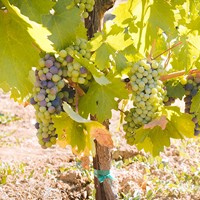
UNDERSTANDING GRAPE VERAISON
Each summer, grapes begin to change color in our Dry Creek Valley zinfandel vineyards. Grape veraison is the beginning of ripening, when red grapes change from green to purple colors. Veraison usually begins in July during moderate weather years, but in cooler vintages, zinfandel grapes don’t start changing color until late July, even early August at times. During ideal weather conditions, the time from coloration to harvest is typically about forty-five days.
There’s much more to grape veraison than the fascinating color change we can see with our eyes. To allow vines to focus all their energy into the existing clusters hanging on their shoots, the grapes cease growing during this period of their lifecycle. This allows sugars to increase and acids to decrease.
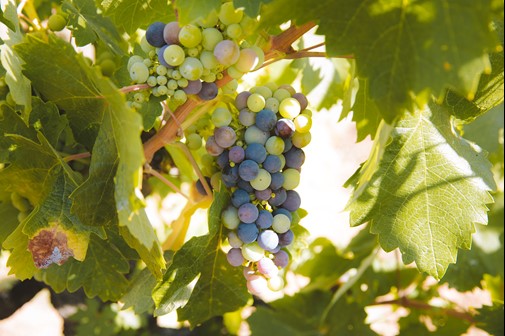
WHY EVEN GRAPE VERAISON IS IMPORTANT
Winemakers want the grape clusters to go through veraison quickly, because the uniformity of coloring within the clusters equals uniform flavors at harvest time. Being able to harvest uniformly ripened grapes is one of the keys to making a velvety, balanced Pedroncelli Zinfandel. If some grapes in the clusters are under-ripe, some perfect and some overripe, the finished wine will express some combination of too dry, too fruity and even too hot or high in alcohol. Only uniformly colored zinfandel grapes can make a balanced, smooth wine.
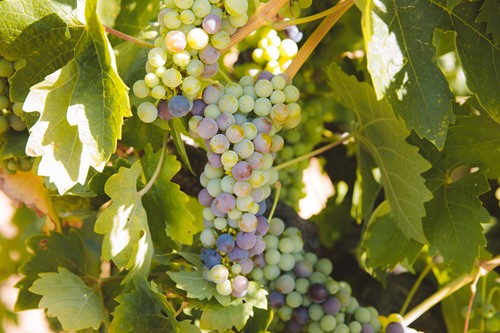
ADDRESSING UNEVEN COLORS DURING VERAISON
The warmer the weather, the more likely the grapes will change colors swiftly and uniformly. So, what does a winemaker do when the grapes change color unevenly? At Pedroncelli, we wait until veraison has taken 80% effect on our zinfandel vineyards, then we’ll start to trim off the “wings” and clusters that are still green. This sacrifice ensures the remaining grapes on the vine develop consistent flavors which will translate later into the wine.
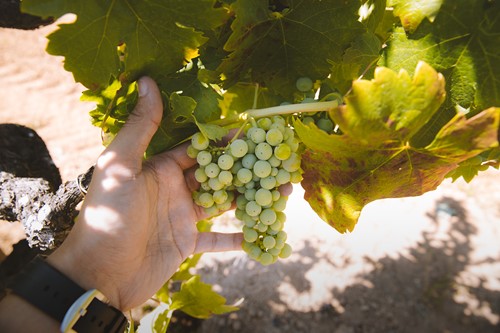
Here's an example of a cluster with a “wing.” A wing is a small bunch that shares the same shoot as a fuller cluster.
During ideal growing seasons, moderately warm temperatures help veraison happen at a perfect pace. Zinfandel, Cabernet Sauvignon and Merlot grapes start changing color in Dry Creek Valley during July and August, depending on when vineyard pruning occurred and the microclimate of each vineyard. In an average year, Pedroncelli’s Dry Creek vineyards complete veraison over two to three weeks.
DO GRAPES CHANGE COLOR AT DIFFERENT TIMES?
Different red grapes varieties go through veraison at different times. Just like during harvest, we don’t always pick the same grapes at the same time. It is spread out over several weeks. If Zinfandel is in veraison now, then we’ll be picking about the second week of September. Cabernet Sauvignon on the other hand has not even started veraison and we’ll expect to pick these grapes at the end of September or beginning of October. It always depends on the weather between now and then too.
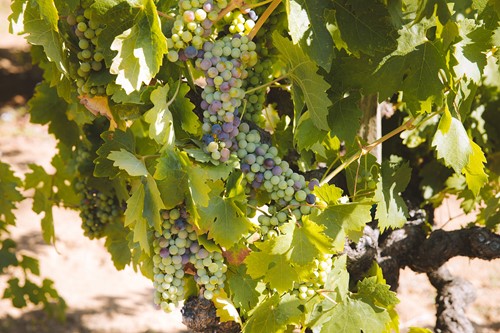
Follow us on social media to stay up to date with our harvest season.
-
Rosé Has Its' Day!
June 10, 2022 14:51
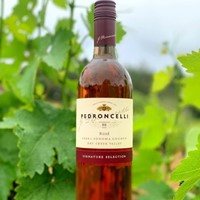
How fitting to celebrate Rosé with its’ own national holiday!
The history of Rosé is a long one-and has been overshadowed at times by the Red and White wines over the last 100 years. But watch out Cabernet and Chardonnay- Rosé has a corner on the market! Looking back to the origins of wine it appears that many of the red wines made then were the color of some of the Rosés today. I imagine those early winemakers chose this style because of the early winemaking equipment (goat skins, amphorae) didn’t allow for cold soak fermentations and other modern techniques. It is also a versatile wine, easy to drink soon after fermentation, not too heavy, not too light. Went well with the catch of the day or the leg of roast beast. No aging in goat skins required.
This wine has been part of our story nearly 70 of our 95 years! We have been making Rosé since the early 1950s when it first appeared as Vin Rosé. A couple of years later, since it was made from Zinfandel, Jim and John Pedroncelli changed the name to Zinfandel Rosé, naturally identifying the grape from which the wine was made. Popularity of our Rosé reigned for a few decades until two rosé roads diverged and we made both a Zinfandel Rosé and a White Zinfandel. Popularity of the lighter and sweeter styled rosé (and yes Virginia it is a Rosé ) spanned the vintages of 1984 through 2000. All along we had a small but mighty base of fans for the OG Rosé. By 2005 the popularity of Rosé in general would soar and we were back in business. We haven’t looked back.
Winemaker Monteserrat Reeece will tell you it is the most difficult wine to make out of all of our wines. The style has changed from my uncle John’s time however. In those early vintages it was made in a saignee method-where the winemaker draws off the juice from fully ripened Zinfandel and separates it into its’ own tank after the juice has settled on the skins for a bit. The color was a deep magenta with full flavor and a bit higher alcohol than the current release. The style now is to pick intentionally for Rosé which means an earlier time-about two weeks ahead of when we would pick for red Zinfandel. By doing this the wine has lower alcohol, is lighter in color and brings crisp acidity for balance with the fruit. It also captures the rose petal/watermelon/spicy goodness of the high aromas and notes of Zinfandel in this form.
Finally let’s talk food. Well first there are a couple of wine-based cocktails I’d like to recommend: our Negroncelli and Strawberry Basil Zingria. Perfect for summer sipping. Now for the food. A few of my favorite things are Grilled Salmon, Seafood Paella (our winemaker’s recipe!), Orzo Pasta Salad, Watermelon Salad, and more-all found on this link to our recipes that are specially selected to pair well with our Signature Selection Rosé. So get ready for summer, order up and sit back. Enjoy our 68th vintage of our Rosé! It will be what's in my Dino this weekend.
-
Ped 101
May 31, 2022 14:49
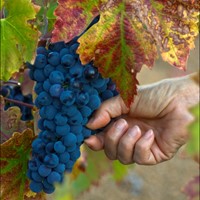
It is nice to have a long weekend every once in a while to reflect and take time out from busy schedules. Lately we have all been working at what feels like breakneck speed here at the winery as we build out our 10 year plan following strategy assessments and portfolio planning. And as we head into the 95th anniversary of our family business I would like to take a look back as well as forward.
Our tale begins when a young family was looking around for some property in 1927 with a GI Loan to back them up and some cash in hand to fund the purchase. A property was found near the town of Geyserville with vineyard, a shuttered winery (thanks to Prohibition) and a home. 90 acres of land located in Dry Creek. The American Viticultural Appellation ‘Dry Creek Valley’ didn’t come along until 1983. It must have been quite a move for the family to go from Dunsmuir California to Geyserville with no connections. The link to this new community was the vineyard. They could still sell the grapes to home winemakers which helped both the family and the vineyard to thrive and survive. Their ‘social’ network established them with other families and our story began.
Intertwined with our family history is Zinfandel. First planted on the property in the early 1900s it was the grape which became the foundation of our portfolio, and our flagship wine. What became known as the mother vineyard was replanted or cloned back into place becoming our Mother Clone. It continues today as the mainstay in our line of wines.
Another part of our story is told through Sonoma Classico, our red wine blend. My grandparents were new to winemaking when Repeal came around allowing them to now make wine commercially. They made wines from what was grown on the estate-Zinfandel, Petite Sirah, Carignane and maybe a little Golden Chasselas and Burger thrown in for good measure. It didn’t come with a varietal name as it was a field blend. Today this wine evokes those early years with the focus on estate fruit and is a classic on its’ own.
The next chapter continues with Cabernet Sauvignon. Second generation brothers Jim and John purchased property on West Dry Creek Road in 1965 and, based on market observations of what people wanted to drink, they planted this grape, the first winery in the valley to do so. Today we are on the second generation of vineyard there and now farm a total of 33 acres on the estate. Our Three Vineyards Cabernet is singular and reflective of the soil and climate. This wine deserves the designation of our second flagship.
Weaving white grapes into the mix, we have planted a few of them over the years. The early days we had Golden Chasselas and Burger, later French Colombard and Sauvignon Vert. These made way for Gewurztraminer and Riesling along with a bit of Chardonnay. They all had their time to shine depending on the era and we found Sauvignon Blanc, planted in the early 1990s, takes the prize as the longest planted. It is the grape which captures best the microclimate of Dry Creek Valley and reflects this in the wine itself. And having grown up 'Dry Creek' this is indeed a grape that deserves all the attention.
As we look to the future as a family some things will change and others stay the same-it is the age old story. We are building a strong base, as strong as the first generation and following generations. I look forward to sharing our journey with you. -
Blooming Vines
May 24, 2022 10:28
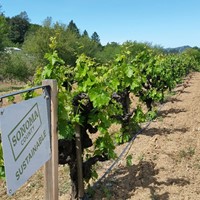
As I look across the way to our Mother Clone Zinfandel vineyards I can see they are growing quickly. Welcome to May which is the month our vineyards typically move into the next phase of growth. And yes vines do ‘bloom’ but they do it differently than your average daisy or rose. Those buds which began to grow through March and April are now ‘flowering’ from tight green pre-bunches to the phase where they open up or flower for a brief time and then crop set will follow and the future berries and bunches are formed. If you are into aroma therapy this is a good time to visit a vineyard just for the lovely sweet smell of bloom. It is a fleeting time so don’t delay!
Sometimes there are challenges during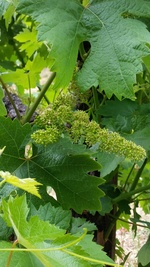 bloom time. What we don’t want is rain at this point-and it doesn’t look like we’ll have any as the days are ramping up into the 80s and 90s in our neck of the woods. This delicate phase also is vulnerable to frost (which happened a few weeks ago damaging some of the lower lying vineyards to the south and east of us) and high winds. All three are threats to the tender green shoots but especially to the future of the 2022 crop. And, of course, once the fruit has set following bloom our vineyard team will be able to predict the production for the upcoming harvest.
bloom time. What we don’t want is rain at this point-and it doesn’t look like we’ll have any as the days are ramping up into the 80s and 90s in our neck of the woods. This delicate phase also is vulnerable to frost (which happened a few weeks ago damaging some of the lower lying vineyards to the south and east of us) and high winds. All three are threats to the tender green shoots but especially to the future of the 2022 crop. And, of course, once the fruit has set following bloom our vineyard team will be able to predict the production for the upcoming harvest.
Each variety of grape grown on our estate grows at its’ own pace. The early bloomers tend to be Sauvignon Blanc and Sangiovese. Mother Clone Zinfandel sets its own pace as most of the vines are 40 years old and take their time with the season. Cabernet Sauvignon and Merlot will begin soon. The pace of the growing season mirrors when the grapes are picked-Sauvignon Blanc is always first in to the crushpad and Cabernet Sauvignon is our end of harvest grape.
We are anxious to see what this month brings to our vineyards and for the future harvest. The next stage is crop set followed by continued growth with veraison (the maturing and changing colors in the berries) around July and before you know it I’ll be talking about the first load of Sauvignon Blanc due in towards the end of August! The cycle of the growing season keeps everyone on their toes. Each year brings something unique to the vintage and the excitement to see what 2022 has in store for us is what keeps us going. 95 years and counting. -
Say Cheese & Wine!
May 19, 2022 14:22
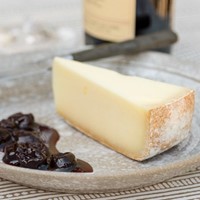
Follow here for access to our event: we have a link where you can order the wines for the event and get the Zoom link (you'll need to cut and paste)
Wine with cheese is one of the world’s best pairings. They complement each other and there are as many cheeses as there are wines to match up-just think of the potential combinations!
My first memory of good cheese comes from my uncle Nick who would make sandwiches featuring sharp cheddar cheese (Tillamook), fresh cucumbers from the garden on whole grain bread. The cheese made the sandwich. I was a bit young to pair wine and cheese at that point, being about 10 years old, but this moment kickstarted a lifelong passion for cheese. My next favorite memory is Roquefort-remember when Roquefort cheese and dressing were all the rage? Those salty crumbles on top were delicious and I always felt so grown up ordering this salad. Still too young for wine pairing so I developed my palate for cheese first.
37 years ago, when I started working for the winery, there were a couple of local artisan cheese makers: Vella and Marin French Cheese Company. I loved the dry Jack cheese from the former and savored the camembert from the latter. Marin French Cheese Company even began traveling with the Sonoma County Wineries group to pair up with us in different markets. More tasty cheeses would make their way across my plate over the next few years.
Around this time I was introduced to goat cheese at a Farmlands tasting where we were pouring our Chardonnay and Pinot Noir. The cheesemaker was Jennifer Bice of Redwood Hill Farms and Creamery. This pairing with both wines playing off of the goat cheese captured my senses and entered me into the world of wine paired with cheese. I was hooked. A few months later we were having dinner at Bistro Ralph and were celebrating our anniversary. Ralph featured a salad with medallions of warm goat cheese and I was raving about it. Our son Joe wanted to try it and, in a scene I still remember, he couldn’t wipe it off his tongue fast enough. Some cheeses aren’t for everyone! Today his favorite is aged Gouda.
At winery events we began using either Vella’s Dry Jack cheese or St. Jorge which is a local Portuguese family’s artisan cheese. Both are perfect with white, rose or red wines complementing the flavors of each and enhancing the experience of both the wine and cheese.
Which brings us to the June 2nd event! I have been a fan of and have attended Janet Fletcher’s cheese classes on a couple of occasions as well as subscribe to Planet Cheese, her newsletter. I have shared her recipes with you and own many of her cookbooks as well. Here is a snippet about Janet from her website: “I live, cook, garden and write on a quiet street in Napa Valley. My house is not large but my kitchen is…and my sunny garden is bigger yet. Here, I develop and test recipes for cookbooks and magazine features; evaluate cheeses for my classes and columns; and prepare dinner nightly with my winemaker husband. In my garden—a terraced landscape of roses, fruit trees and raised vegetable beds—I find inspiration for daily cooking and an antidote to deadline stress.” For more of her story, recipes and newsletter articles click here.
I asked Janet to curate the cheeses for our May Wine Club Shipment-if you are a Club Ped member you’ll be receiving them soon and if you aren’t a member we have a link where you can order the wines for the event and get the Zoom link (you'll need to cut and paste). The cheeses are sold separately through iGourmet and you can order them here.
Everyone is welcome to join us for this very special evening of wine and cheese at no charge! As a bonus our winemaker Monteserrat Reece will be joining us to talk about the wines.
The list of wines and cheeses are as follows:
2021 Signature Selection Rose
2019 Bench Vineyards Merlot
2019 Sonoma Classico
2019 Block 007 Cabernet SauvignonPaired in order below with:
Meredith Dairy Sheep & Goat Cheese: Soft, spreadable goat cheese, marinated in blended Australian Extra Virgin Olive oil, garlic and herbs. This luxurious cheese is incredibly addictive and very versatile.Firefly Farms Cabra La Mancha: Smooth, silky and versatile with a subtle grassiness. Goat Cheese from Maryland.
Ossau-Iraty: A superb, silky aged sheep cheese from the French Pyrenees and renowned producer Agour. This company’s Ossau-Iraty has twice been voted the best cheese in the world at the World Cheese Awards.
Face Rock Creamery Clothbound Cheddar: Modeled after classic English Cheddars, this beauty comes from Bandon, Oregon, and is the creation of acclaimed Cheddar expert Brad Sinko. A blue-ribbon winner from the American Cheese Society.
Please come along for the sheer joy of a wine and cheese adventure. -
Seasons in the Vineyard Spring Edition
May 3, 2022 11:08
Six weeks into spring here on the Home Ranch and the Mother Clone Zinfandel is growing by the proverbial leaps and bounds. A slow start at budbreak and then some warm weather in early April sped things up. Followed by a cool front which moved in and brought a few inches of rain and the vines took a brief break. By the end of the month it was up to seasonal temperatures of 65-70 degree days. Perfect for growing those vines.
Here are three glimpses via video of different varieties that we grow: Mother Clone Zinfandel, Wisdom Cabernet Sauvignon and East Side Vineyards Sauvignon Blanc. These were taken last year in May by Marcus Cano who is Polo, our assistant winemaker's son.
Mitch Blakeley, fourth gen family member, talks about how each vineyard is farmed during the spring season. You'll learn more about the why of suckering and cane positioning as well as what to expect as the vine progresses through the growing season. Click on the photo to view the video. Enjoy the show.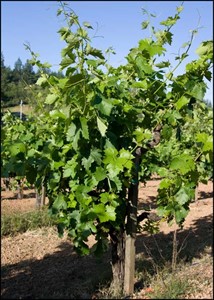
Our Mother Clone Zinfandel vines are nearing 40 years old on the Home Ranch-the original vineyard was first planted in the early 1900s and we replanted beginning in the early 1980s and it became a second generation of vineyard. We farm 33 acres today.
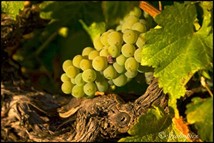
Sauvignon Blanc was first planted in the early 1990s and today is the only white wine variety we have with a total of 11 acres.
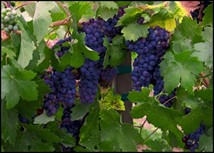
We were the first to plant Cabernet Sauvignon in Dry Creek Valley in 1965. Our Wisdom Vineyard was replanted 40 years later to the same variety but using Clone 4 or the Mendoza clone which gives us intense color and flavor with smaller bunches. We farm 33 acres of this variety and includes our Block 007 and Three Vineyards blocks.
As Mitch says, I hope you learned a bit more about how we farm and what we look for in the vineyard as the vines go through the season of spring.
-
Down to Sonoma County Wine Month
March 29, 2022 15:23
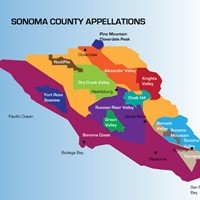
Spring is a great time to focus on the earth and the future bounty of a harvest what with the vineyards beginning the growing season with budbreak just two weeks ago. This month also happens to be Down to Earth Month, established several years ago by Wine Institute’s California Sustainable Winegrowing Alliance program, to celebrate sustainability in both vineyards and wineries. A few years later Sonoma County Vintners established Sonoma County Wine Month to celebrate the wines from our region. Put the two together and you have a celebration of all that is good about wine and winegrowing.
Down to Earth Month in California celebrates sustainability among the many vineyards and wineries taking a page from Earth Day which is April 22. There are many chances to visit the wineries and vineyards to see the growing season in action, to learn about sustainability and to revel in the beauty of the land we call home.
What sustainability means along with our own certification journey. The California Sustainable Winegrowing Alliance was formed to help grape growers and wineries practice sustainable winegrowing by following these tenets: good for the environment, good for the community and good for grapes and wine. To start the certification process at Pedroncelli, fourth generation member Mitch Blakeley was tasked with answering a few hundred questions ranging from energy efficiency to packaging, vineyard practices and water use among others. Once finished we were audited and, since everything was in good order, we were certified in 2017 in the vineyard, just in time for our 90th anniversary. Our winery followed the next year. One of the reasons I like the sustainability program is it encourages doing better as we go forward. Each year we pick a project and work at getting better or smarter in both the vineyard and winery. The auditor then reviews the progress and recertifies us.
The big picture: There are 5,900 growers who farm 620,000 acres of winegrapes in 46 of California's 58 counties. Did you know vineyards cover less than one percent of the state's terrain? There are 4,200 wineries that produce over 81 percent of all U.S. wine. Here in Sonoma County there are over 400 wineries farming 60 varieties with 62,000 acres of grapes farmed by 1800 growers. That makes 6% of all land in the county covered by winegrapes which leaves lots of room for our coast, redwoods and cities & towns. Sonoma County Wine Month is the perfect time to celebrate the rich heritage of wine here so why not get Down to Earth and enjoy visiting us in person or virtually-it’s your choice and we look forward to seeing you soon.
-
Open That Bottle Night 2022
February 28, 2022 10:25
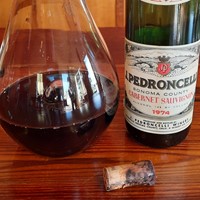
If it is the last Saturday of February you all know what I am going to write about-OTBN! Like me you may have circled February 26 on your calendar-or at least made an appointment on your phone. From the handy Days of the Year description: “Reveling in the idea that great wine is just meant to be shared, Open That Bottle Night is all about creating memories and telling stories of those special shared moments. This is the perfect time to remove that cork and get down to the business of enjoying life.”
Created 22 years ago by two Wall Street Journal columnists, Dorothy J. Gaiter and John Brecher, ‘Open That Bottle Night’ (OTBN) is an annual occasion that aims to motivate people to reconnect with each other over a special bottle. In my opinion it is a celebration of what’s in your cellar/closet/wine rack or fridge. A day set aside to open a bottle of wine that was saved for a special occasion or one that has special meaning from a trip abroad or to Wine Country.
Here are a few things to think about while deciding which wine to open:
Where did the wine come from, what vacation story is behind it or was it a special gift? What vintage story do you have to tell such as where were you in 1974 or what were you doing in 1996? Have I waited too long? Is the timing right? You’ll have to use your own judgement as you dust off the bottle or pull it from the wine fridge. Enjoy the next couple of stories which were sent my way in the last few weeks.
From Leigh G, Portland OR-
I bought the 1996 Pedroni-Bushnell Zinfandel from you in your new tasting room approximately 4 ½ years ago during the Passport to Dry Creek Valley event. I’ve kept the wine in my 2nd wine cooler, which runs a little colder at approximately 50 degrees. I decided to bring it to share with seven friends for an annual dinner.
We had the luxury of having a sommelier open the wine. A little problem with the cork, but he was a professional and proceeded to decant the wine. The wine had a beautiful dark brown red color, which is typical of an aged wine prime for drinking. Good legs on the glass and a pleasant nose of fruit. The wine opened with rounded plum and berry tones, then a punch of soft tobacco on the mid pallet with very soft tannins. It finished with warm baking spices (clove, nutmeg, cinnamon) on the back end. We all so enjoyed the wine!
And from Dan N, Port Townsend WA, I received a bottle of our well-aged 1974 Cabernet Sauvignon in January and knew I wanted to save it for this year’s OTBN. Here are excerpts from his letter:
“I was going through my wine storage, an unheated underground room, when I uncovered this bottle of your 1974 Cabernet Sauvignon. This bottle was purchased by me at your winery sometime in the late 1970s when I made an annual summer drive from my home outside San Diego to my ancestral home in Washington State.
I did a search and ran across your Vino in My Dino comments on February 17, 2015. Your article was prompted by someone who had just opened and tasted the 1974 Cabernet. It noted a drop off in fruitiness and VIMD suggested that the vintage may not last much longer.
Two years ago, I received radiation for cancer and the therapy resulted in significant impairment of my taste. I no longer drink wine for pleasure. Although I will share a bottle with guests, I’m always uncertain as to whether my sensation is an accurate reflection of the wine’s characteristics.
Therefore, I’m sending this bottle to you. First and foremost is to give you a chance to review it for yourself. Second is the hope that you can give me your reaction to the wine in what is probably it’s closing years. (I’m 88 and well past my ‘pull date’ but, somehow, I surprise myself and others as I manage my orchard and extensive yard as well as a very successful HOA). An email report would be appreciated.
I still drive to San Diego, usually on 101 to Richmond then to I-5. As soon as the pandemic permits, I will be on the road again and will stop to pick up some of your wines for my friends. In Vino Veritas."
We celebrated OTBN a little early because I wanted to invite staff to join me when we opened the 1974 Cabernet. At 3pm on Friday Jim carefully maneuvered the cork out of the bottle with an AhSo opener (two pronged to ease an older more delicate cork out of the neck). I had set it upright for a few weeks to stabilize after its’ journey from Dan’s cellar to ours. My dad Jim contributed another gem from our cellar here at the winery, the 2001 Four Grapes Vintage Port. We tasted together and here are the results. 1974 Cabernet Sauvignon: Pale brick in color with notes of dried berries and cedar on the nose. The flavor was lifted by the acidity and tannin still present and the finish was long. Flavors carried through with notes of berry and a hint of warm spice. Drink it if you have it in your cellar.
1974 Cabernet Sauvignon: Pale brick in color with notes of dried berries and cedar on the nose. The flavor was lifted by the acidity and tannin still present and the finish was long. Flavors carried through with notes of berry and a hint of warm spice. Drink it if you have it in your cellar.
2001 Four Grapes Vintage Port: Tawny in color, clear, toffee, caramel and toasted nut flavors, rich in taste and a keeper for a few more years.
Thank you Leigh and Dan for sharing your thoughts and your wine. It always amazes me how wine comes alive even after years in the cellar. -
Barrels Inside & Out
February 22, 2022 09:42
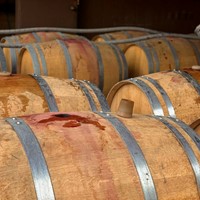
Have you ever wondered what barrel tasting really means? Are you curious about why wine is aged in barrels at all-what is the point? What happens during the aging process and what exactly is ‘angels’ share’? Today’s note includes answers from winemaker Montse Reece and cellarmaster Polo Cano.
First we’ll start with a little Barrel 101. How big are those barrels? We use 59 gallon size barrels which holds enough wine for about 24 cases, give or take a bottle or two. Why do we barrel age wine at all? Think about it in this way. If you have a raw piece of wood that needs the edge taken off and you’d like to use it as a frame, you’d take it to the shop and start sanding and shaping it. The same thing happens in barrel-the wine is raw and rough when it is transferred and over time helps to smooth out those rough edges.
There are more benefits to aging including aeration, concentration and oak notes like toasting-something the cooper (barrel maker) does to increase the flavor components in the barrel. The process gives the wine, over time, more complexity as it takes on some aspects of the wood itself. Aeration slowly incorporates air thereby smoothing the tannins; concentration-with evaporation of water and even alcohol you get concentrated flavors and in fact we lose about a gallon or two to this process.
I asked two questions: Why is it important to top barrels and why is it important to take time to taste from the barrel?
From Polo:
"Topping to replace the lost wine through evaporation (every three months is the ideal timing). It gives us a chance to smell every barrel and to see how it is aging and to see how the new oak is integrating with the wine (to catch and separate odd smelling barrels if any). To adjust the free Sulphur in the wine so it stays protected."
From Montse:
"Barrels aren't completely airtight, so after a while the evaporation creates a headspace, also known as ullage. The concentration of free SO2 declines faster in barrel than in a tank due to oxygen exposure and should be checked every 1 to 3 months depending on the circumstances. It’s important to keep the barrels full to avoid oxidization and bacterial spoilage that can ruin the wine. (Editor's note: And this is what free sulphur does-it acts to prevent spoilage which would in turn develop undesired aromas-it is a very fine balance to maintain!).
Before we start topping it’s important to smell and taste if necessary from every barrel to detect off aromas that can be a clue for spoilage or oxidization. If confirmed, the barrel is isolated from the rest and treated accordingly.
You look for pretty much the same when you taste young or longer aged wines in barrels: hints for spoilage or oxidization. On the positive side, I look for fruitiness and acid integration in young wines and oak integration, aging evolution of the varietal flavors on the older wines."
What is the angel’s share? The portion that is lost over the year (or more) the wines age-evaporated away poetically into the heavens.
Polo wraps up this note perfectly. “It is kind of a time to wake your baby up, see that it is ok, feed it, play with it and put back to sleep.”
Categories
- COVID
- Follow the Vineyard
- Note from Home
- PairItWithPed
- Pandemic
- pedroncelli
- Port
- Postcards from Home
- Pruning
- Seasons in The Cellar
- Tasting Room
- Thanksgiving
- Vintage Notes
- Winemaking
- Women's History Month
Recent posts
-
A Year Filled With Change
-
Pass Me the Ah So
-
Seasons in The Cellar: Scale House
-
Seasons In The Cellar: Summer Edition
-
What is Grape Veraison
Popular tags
- Sonoma County
- Cookies
- Schotzki
- Anniversary
- Recipes
- Courage Zinfandel
- Crop set
- Pedroncelli
- cheese
- Pruning
- Dry Creek Valley
- Homecooking
- Springtime
- Library Wine
- newsletter
- PairitwithPed
- Bushnell Vineyard
- Oak
- cooking with wine
- Barrels
- Rosé
- Sauvignon Blanc
- Easter
- Pantry
- Sonoma Classico
- COVID19
- Heat wave
- Follow the Vineyard
- Block 007 Cabernet Sauvignon
- Harvest 2022
- Cellar Master
- 1974 Cabernet Sauvignon
- COVID Coffee Chat
- Down to Earth
- Seasons in The Cellar
- OpenThatBottleNight
- Holding steady
- Cabernet Sauvignon
- Finding Your Roots
- food and wine
- Mother Clone
- family
- Pandemic
- French Oak
- Habit
- note from home
- American Oak
- Lake Sonoma
- Four Grapes Port
- Merlot









